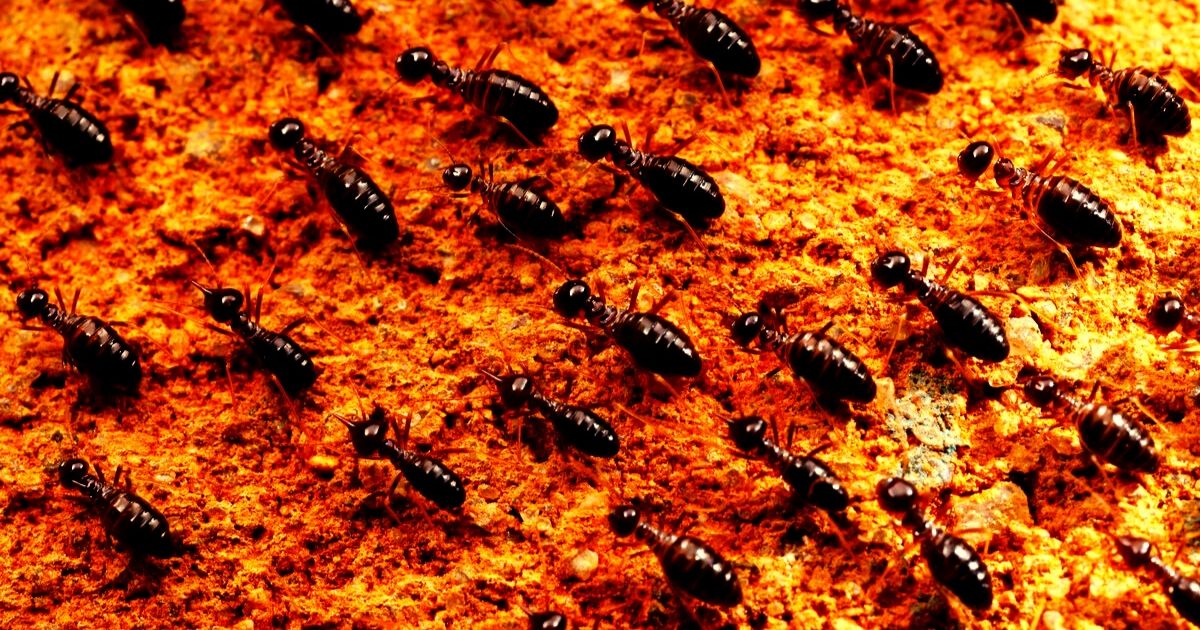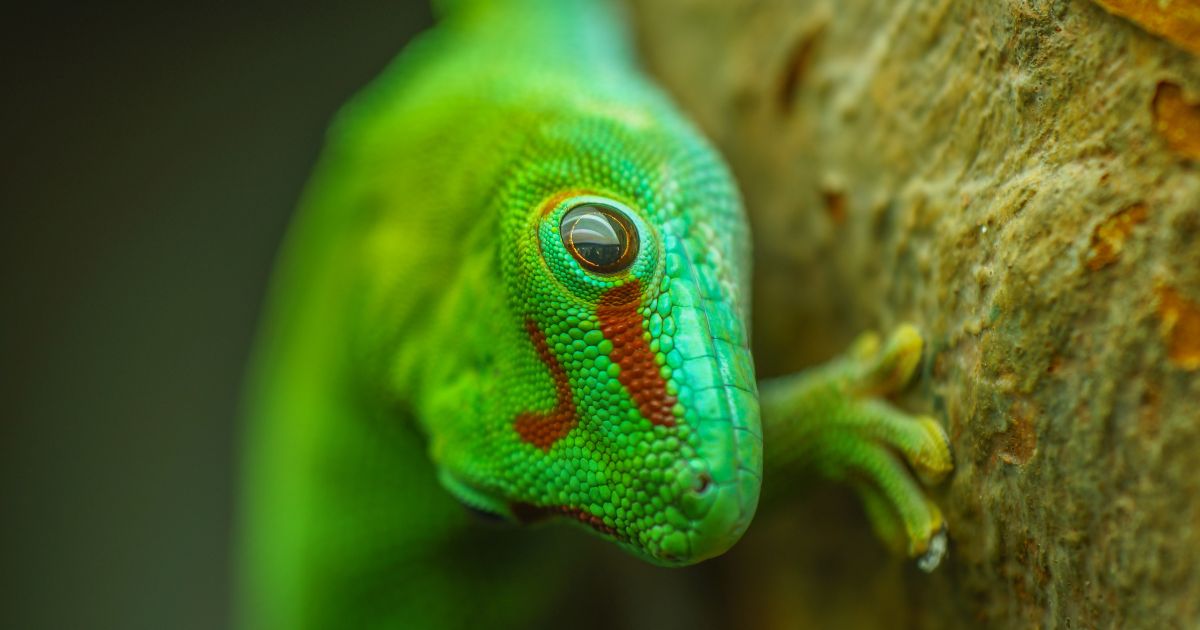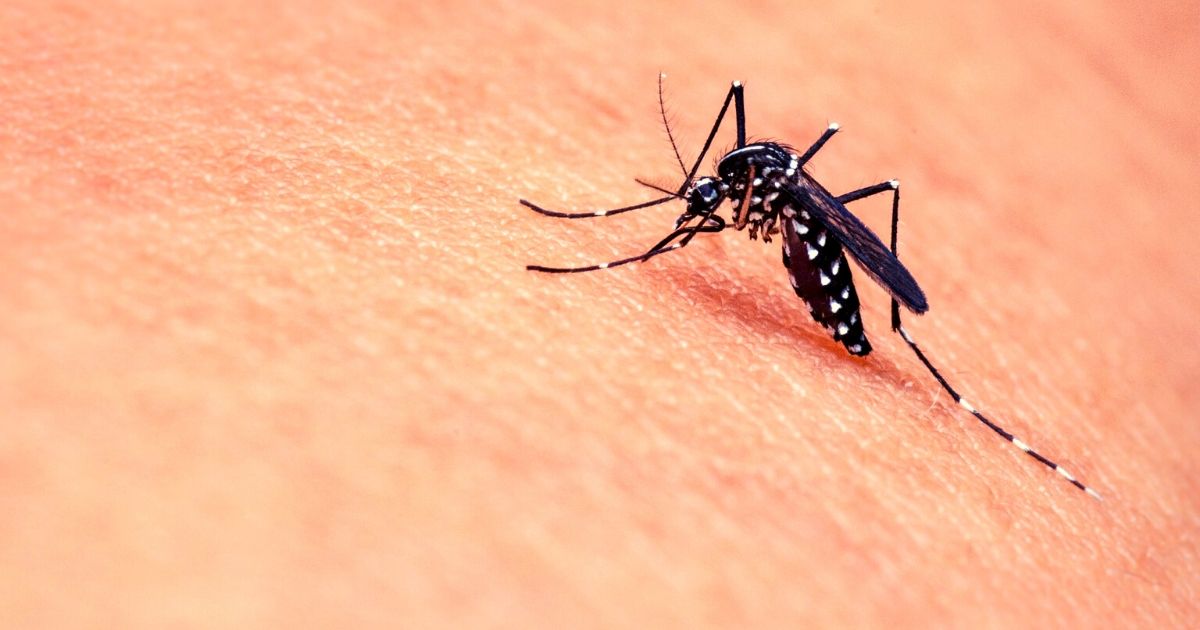What is the Wolbachia Project? An Overview of Singapore's Mosquito Breeding Project
Dengue
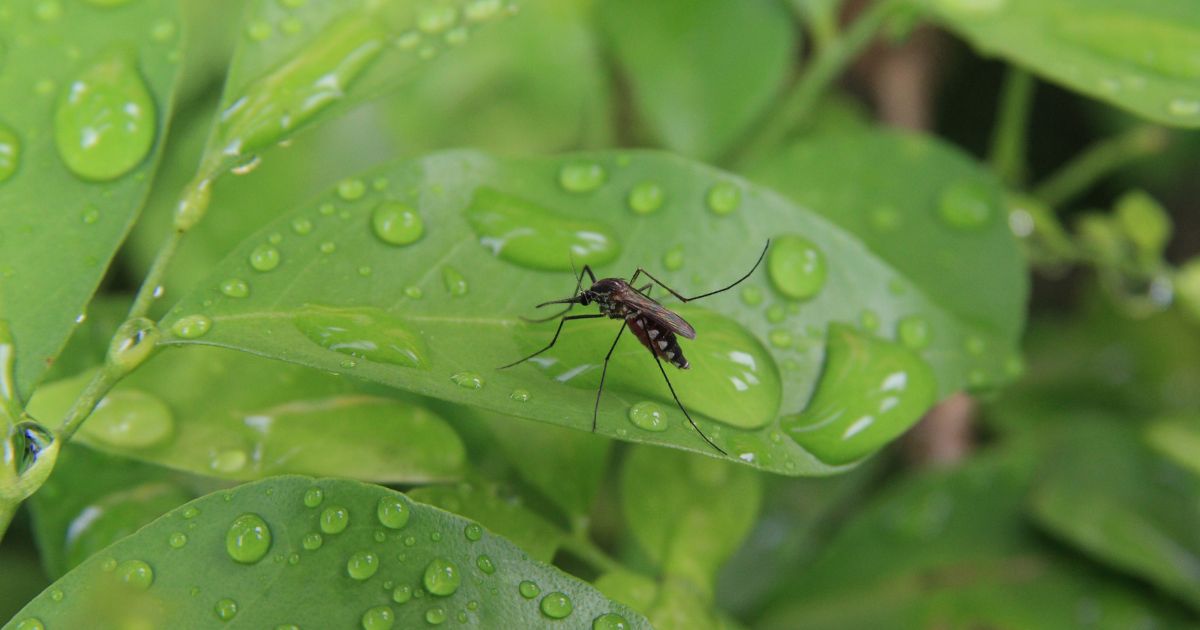
Have you ever heard of the Wolbachia Project? It is a collaboration between various organizations including the World Mosquito Program and Singapore’s National Environment Agency (NEA). The Wolbachia Project is meant to control the Aedes mosquito population by breeding mosquitoes. Sounds confusing, right? In this article, we are going to break down what the project entails and if it is useful.
What is the Wolbachia Project?
Various countries in the world including Singapore are faced by health challenges due to mosquitoes. The Aedes aegypti mosquito is the biggest troublemaker. This type of mosquito bites human beings and can thereby transmit diseases including:
- Dengue fever
- Zika virus
- Chikungunya
Hence, it is important to find ways to suppress the Aedes mosquito population. The Wolbachia Project is an attempt to do just that.
Wolbachia is actually a bacterium that is naturally present in half of all insects. This includes certain types of mosquitoes, but not the harmful Aedes mosquito. The bacterium is transmitted from the female to her offspring. The effect is that the reproductive capacity can get limited, such as male insects becoming sterile.
What is the purpose of the Wolbachia Project?
The main goal of the project is to breed and release male Aedes mosquitoes that are infected with Wolbachia to reduce the amount of mosquitoes that carry and can transmit infectious diseases.
The project is not that old, as it was only launched in 2017 in a variety of countries including Singapore.
The project is especially interesting for Singapore as the majority of mosquitoes are the Aedes variety, which makes it a big health threat for the country. The project does appear to have had some success and the NEA has continued to apply the Wolbachia strategy.
The number of male Wolbachia-Aedes mosquitoes that are reared on a weekly basis is around 5 million, which means more than 250 million mosquitoes per year.
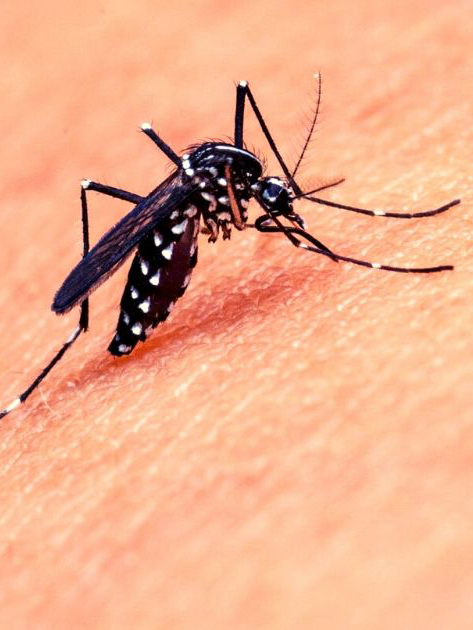
Wolbachia Mosquito Suppression Strategy
It’s probably still confusing how breeding mosquitoes can actually help reduce infectious diseases. Let’s explain it in simple words.
Female mosquitoes have a huge reproductive capacity. One female mosquito can lay 200-300 eggs each time she reproduces. The hatching of eggs only takes about 2-3 days. In a lifetime, a female can go through this process 5 times. That means one female mosquito has the capacity to breed up to 1500 mosquitoes in a short amount of time. Imagine how many Aedes mosquitoes carry Dengue, Zika and other potentially deadly diseases.
One strategy to reduce disease-carrying mosquitoes is to suppress or limit the reproductive capacity of females. This is where the Wolbachia-males come in. Remember that Aedes mosquitoes don’t naturally carry the Wolbachia bacteria. But the mosquitoes that are reared through the Wolbachia Project do carry the bacteria.
The Wolbachia Project only focuses on raising male Wolbachia-carrying Aedes mosquitoes. Then, once they are ready to be released at sites in Singapore that have a lot of mosquitoes, the male mosquitoes try to mate with the females. But now, due to the presence of the Wolbachia bacteria, the eggs do not hatch.
The result is that the female is not able to rear hundreds of mosquitoes, hence the mosquito population decreases. Reports from the NEA declare that some study sites have seen a reduction of Aedes mosquitoes of up to 98%.
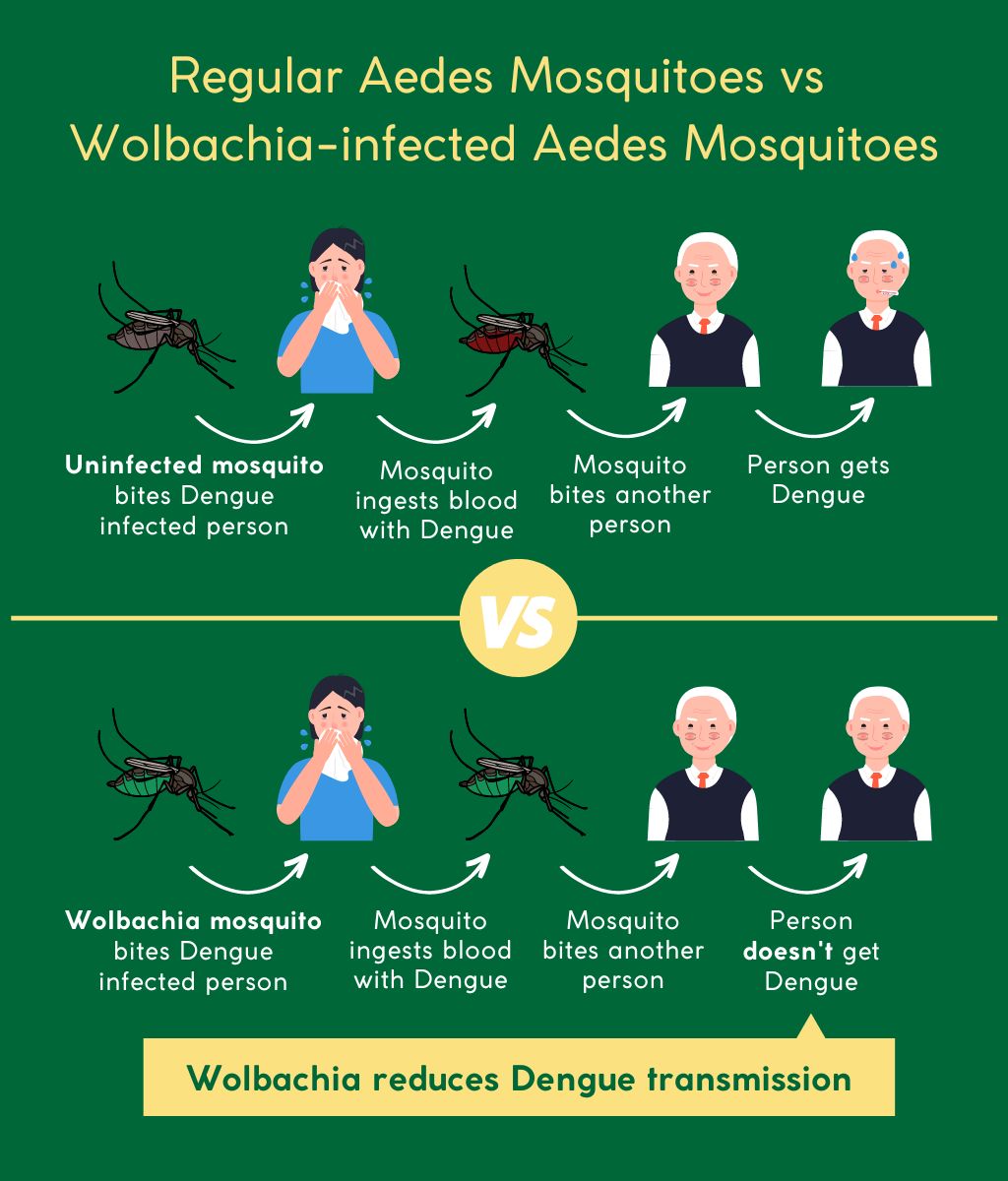
3 stages of the Wolbachia mosquito breeding project
There are 3 stages involved with the Wolbachia mosquito breeding project, namely:
- Rearing: Male Aedes aegypti mosquitoes are reared in a controlled environment in a lab and get infected with Wolbachia.
- Release: The male Wolbachia-infected mosquitoes get released in Singapore where there is high number of mosquitoes. The strategy is for males to outnumber the females.
- Monitoring: The impact of the strategy is assessed and monitored, for example by measuring the incidence rate of dengue.
Interesting Fact: Wolbachia is a naturally occurring bacteria found in up to 60% of insect species, but it is not typically found in the Aedes aegypti mosquito, which is responsible for transmitting human viruses like Zika, dengue, and chikungunya.
Is the Wolbachia bacteria safe for humans?
The World Mosquito Program reports that – based on three independent assessments – the risk of the Wolbachia bacteria for humans is minimal. Animals and the environment also appear to be safe when encountering Wolbachia.

Pest Problem? Let Us Help.
We offer fast and effective precision treatments to eliminate pests while ensuring a safe environment for your home or business.
Conclusion
Aedes mosquitoes pose a huge challenge in Singapore, and innovative approaches are required to help suppress their presence. The Wolbachia Project is one of many approaches that appears to have had success. Singapore will continue to develop innovative solutions by using advanced technologies with the goal of reducing the presence of infectious diseases such as Dengue and Zika.
Author: Soleha Nisaa
Frequently Asked Questions
Wolbachia was first discovered by two American scientists, Marshall Hertig and S. Burt Wolbach, in the reproductive tissues of the mosquito Culex pipiens.
Wolbachia is important because of its potential for disease control, and environmental protection, its impact on evolutionary studies, and its use in medical research. In particular, Wolbachia has been found to significantly reduce the transmission of diseases, and can also be used for biological control of pests such as fruit flies, which can damage crops.
Wolbachia can take several generations to spread through a mosquito population. Typically, it is introduced through the release of Wolbachia-infected males, which mate with uninfected females. Over time, the proportion of infected mosquitoes increases until it reaches a stable equilibrium.
Yes, Wolbachia has been shown to reduce the transmission of other mosquito-borne diseases, including chikungunya and malaria. It is currently being tested as a potential tool for controlling these diseases as well.
Related posts
The Ultimate Guide to Mosquito Prevention, Treatment and Control in Singapore
Dengue
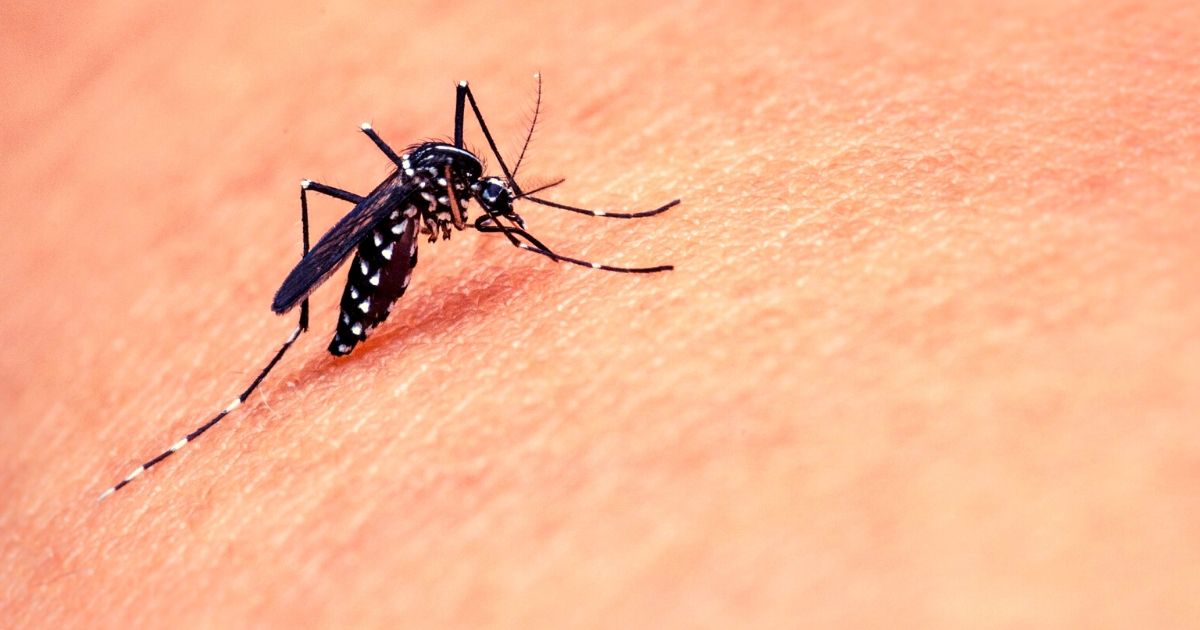
Table Of Contents
- Types of Mosquitoes in Singapore
- Signs of Mosquito Infestations
- Life Cycle and Biology
- Medical Importance
- Symptoms of Mosquito-Related Diseases
- Ways to Prevent Mosquito Bites
- How to Prevent Mosquito Breeding In and Around your Home
- DIY Methods to Prevent and Get Rid of Mosquitoes
- Professional Mosquito Treatment
Mosquitoes are tiny creatures. Without their wing’s buzzing sounds, we might not be aware of their presence. Nevertheless, they feed on humans and animals, leaving itchy, annoying bites on the flesh that can cause excessive irritation and infection. Mosquitoes cause annoyance with their uncanny ability to detect humans’ presence, taking blood and disappearing before a fatal swat.
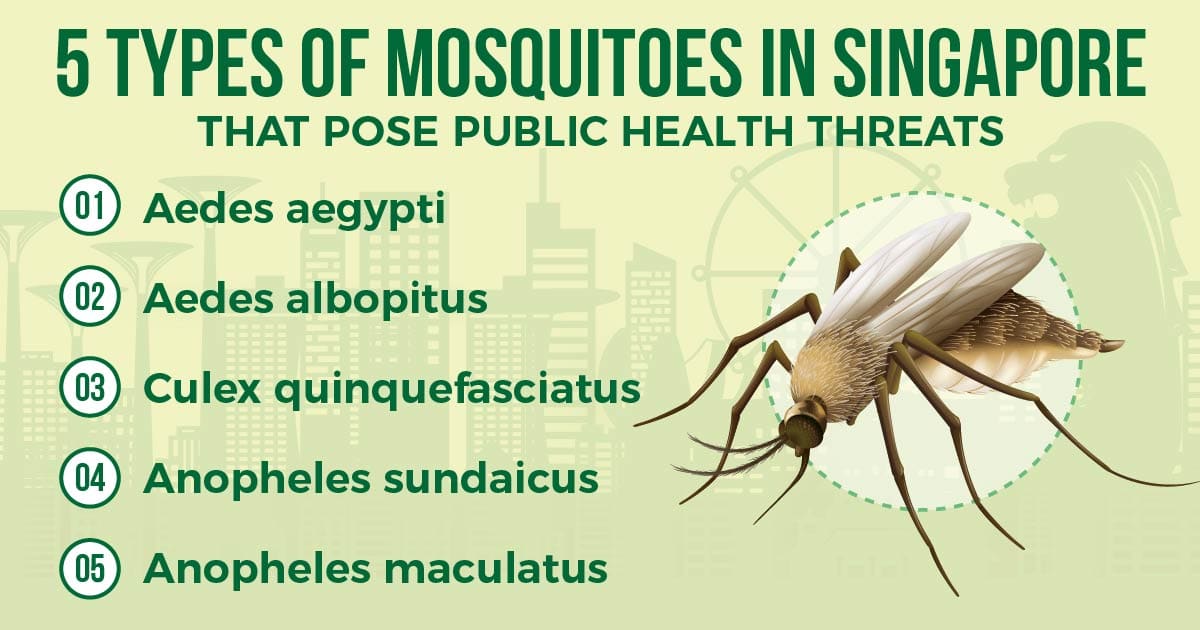
Types of Mosquitoes in Singapore
Numerous species of mosquitoes are active in Singapore. Some of the species are uncommon or seldom pose a threat to public health.
The primary mosquito species of concern in Singapore are:
- Aedes aegypti
- Aedes Albopitus
- Culex quinquefasciatus
- Anopheles sundaicus
- Anopheles Maculatus.
Aedes Mosquitoes
Aedes mosquitoes exist in urban and suburban areas. They are black with white stripes on their body and legs. They are the so-called container breeders that prefer to breed in stagnant water, including natural and artificial containers.
Aedes Aegypti
Aedes aegypti is an indoor species that tends to breed and rest in cool dark places.
Aedes Albopitus
Aedes albopitus mosquitoes prefer to breed outdoor, especially in areas with vegetation.
Culex and Anopheles mosquitoes
Culex and Anopheles mosquitoes are night biters. Most of them are brown. Culex mosquitoes tend to breed in polluted water while Anopheles mosquitoes breed in brackish water (depending on the species).
Signs of Mosquito Infestations
A mosquito infestation in premises is most easily detected through mosquito bites.
These bites leave itchy bumps on people’s skin.
Besides mosquito bites, you may also notice an irritating buzzing sound as mosquitoes fly near your head. It is common to spot flying adult mosquitoes around the infested premises. Their larvae and pupae may be found in water bodies such as vase and flowerpot plates.
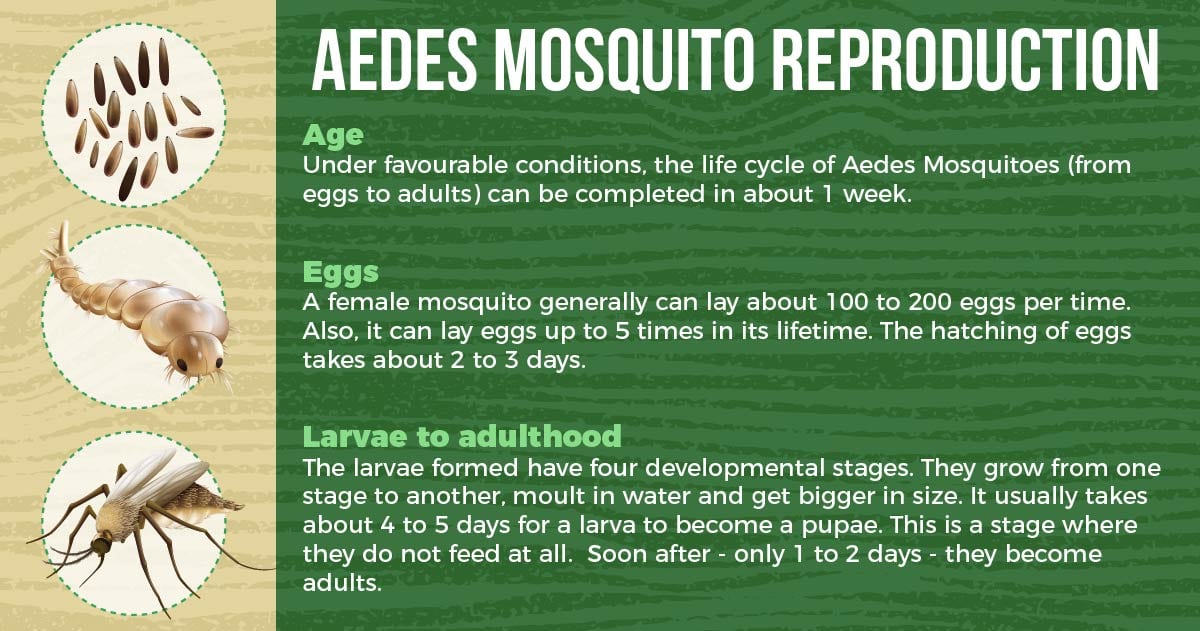
Life Cycle and Biology
The life cycle of Aedes Mosquitoes (from eggs to adults) takes around one week under favourable conditions. The tropical climate in Singapore provides mosquitoes with optimum temperature for their growth. Compared to other countries outside the tropical region, mosquitoes require less time to complete their life cycle in Singapore.
A female mosquito generally can lay about 100 to 200 eggs per time.
Also, it can lay eggs up to 5 times in its lifetime. Hence, a viable female mosquito produces a thousand eggs. One terrible fact about Aedes mosquitoes’ eggs is that they can resist dehydration for more than 6 months. In other words, the eggs can survive in a dry condition for up to 6 months or more and hatch once they are exposed to water.
The hatching of eggs takes about 2 to 3 days. The larvae formed have four developmental stages. They grow from one stage to another, moult in water and get bigger. It usually takes about 4 to 5 days for a larva to become a pupa.
As they grow to become pupae, this is a stage where they do not feed at all. They will usually rest at the water surface and wait for their emergence of becoming adult mosquitoes. This process only takes 1 to 2 days.
For adult mosquitoes, females will suck blood to provide nutrients for their eggs. However, male mosquitoes will only feed on nectar or plant juices. Both sexes prefer to stay in cool and dark places.
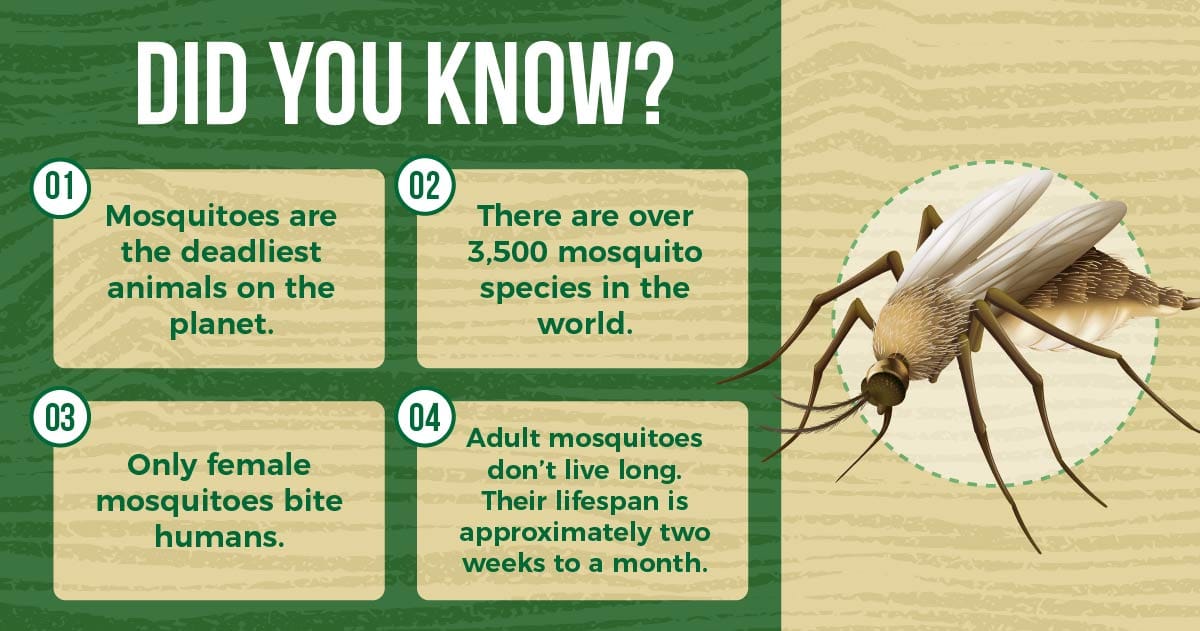
Medical Importance
Beyond the nuisance factors, mosquitoes are vectors of some deadly diseases, including Dengue Fever, Chikungunya, Zika Virus, Japanese Encephalitis, and Malaria. Among these diseases, Dengue Fever is one of the most severe vector-borne diseases affecting our community in Singapore.
Aedes aegypti and Aedes albopitus are the two main species of Aedes mosquito that can transmit Dengue fever in Singapore.
The most common mode of transmission starts when an Aedes mosquito bites a person infected with the Dengue virus. The virus then undergoes an extrinsic incubation period in the mosquito. It takes about 8-12 days before granting the mosquito the ability to transmit the virus for the rest of its life. The infectious mosquito then transmits the virus to humans via its bite. The intrinsic incubation period in humans can take up to 10 days. An infected human will then begin to show symptoms of the disease.
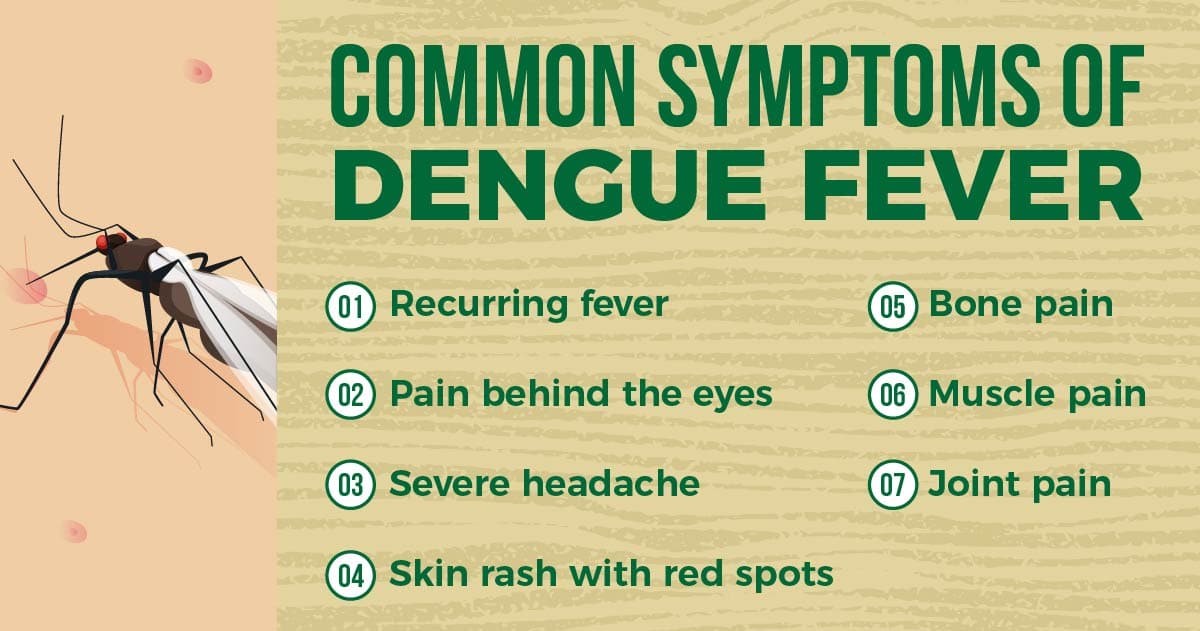
Symptoms of Mosquito-Related Diseases
If someone is infected with Dengue fever, they may only show few or no signs of the disease. This is called asymptomatic. Some people may experience symptoms a few days after being bitten by a mosquito carrying the virus.
The common symptoms of Dengue fever are:
- Recurring fever
- Pain behind the eyes
- Muscle pain
- Joint pain
- Bone pain
- Severe headache
- Skin rash with red spots
While the fever is usually not fatal, it can progress to Dengue Hemorrhagic Fever (DHF). Life-threatening complications may then occur.
The symptoms of DHF include:
- Severe abdominal pain
- Diarrhoea
- Vomiting
- Convulsions
- Bruising
- Uncontrolled bleeding
Finally, DHF can also lead to a high fever (lasting between 2 to 7 days) and Dengue Shock Syndrome.
Pro tip: If you're worried about a bite or sting, your symptoms do not start to improve within a few days or are getting worse, contact your doctor.
Ways to Prevent Mosquito Bites
Singapore’s hot and humid climate makes it a paradise for mosquitoes to breed. The threat of Dengue in Singapore is all year round. However, there are still no vaccines or drugs that can effectively treat or prevent dengue fever. Hence, reducing the risk of getting mosquito bites will lower the chances of having dengue fever. Several factors can affect the attraction of female mosquitoes towards a blood meal, namely carbon dioxide, body odour and the heat emitted by animals and humans. Here are some ways to prevent mosquito bites:
1. Use insect repellents
Apply insect repellent to bare skin when going outdoors. Repellents containing DEET (the common active ingredient in insect repellents) are the most widely available insect repellents in the world. A great deal of testing has been done on DEET insect repellents. They are proven to be safe to use.
2. Wear protective clothing
Vision is one thing mosquitoes use to search for their blood meal. Black or dark coloured clothes are proven to be more attractive than light coloured clothes for mosquitoes. However, mosquitoes can bite through clothing that is made of thin materials like tights. Hence, long-sleeved thick clothing is advisable as mosquitoes might find it difficult to bite through.
3. Avoid peak mosquito hours
To avoid mosquito bites, you might need to plan any outdoor activities when mosquitoes are less active. Although different species have different active hours, mosquitoes are generally more active during dawn and dusk.
4. Keep air circulating
Mosquitoes are weak fliers, which means they are not that efficient at flying and are not able to handle strong wind. Use of electric fans for outdoor activities and gatherings can prevent you and your family from mosquito bites. Mosquitoes usually fly at the lower half of our bodies and near the ground. Therefore, aim fans towards that area.
5. Sleep under a mosquito net
If you notice mosquito bites on your body after hours of sleeping, using a mosquito net would be a good idea.
6. Get rid of stagnant water
Any puddles of water around your home can become a potential breeding source for mosquitoes. Always be mindful to empty water from flowerpots, plates, pet food, WC pan collar, buckets, barrels and cans at least once or twice a week as mosquitoes’ life cycle can be completed within a week. Always cap the bamboo pole holders when not in use to prevent rainwater from splashing into the holders.
7. Keep your landscapes and home clean
Remember to keep the gully traps, scupper drains, and roof gutters clean. Thinning dense vegetation will help to improve air circulation. You can avoid getting mosquito bites by making your environment less desirable or appealing to them.
Want to find out more about mosquito control in Singapore?
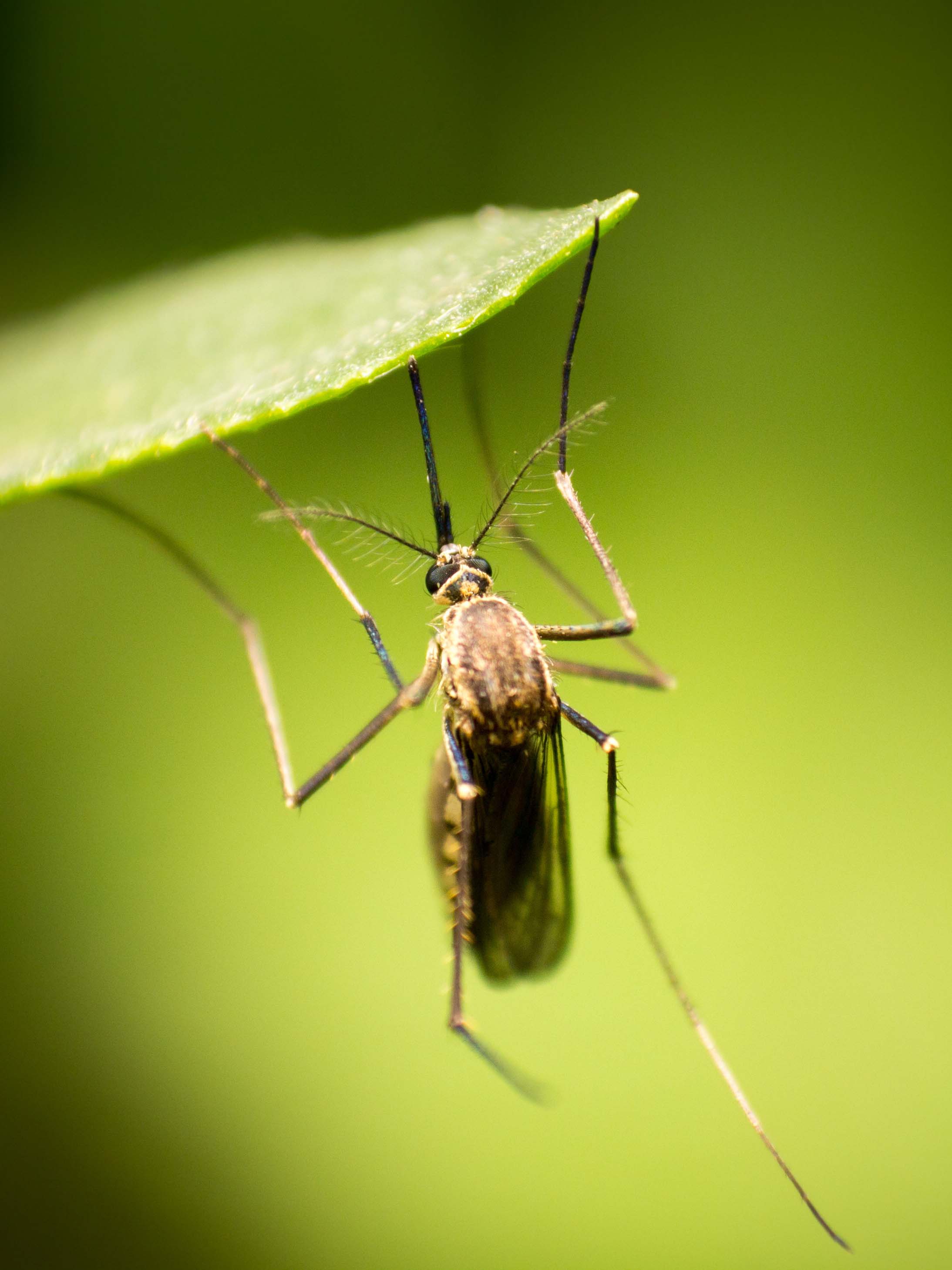
How to Prevent Mosquito Breeding In and Around your Home
Controlling and preventing mosquitoes in Singapore is a real challenge. As mentioned, the climate offers an ideal breeding ground for mosquitoes. However, public awareness, preventive methods, and collective efforts are crucial in the battle against Dengue in Singapore.
Aedes mosquitoes can breed in water bodies that are as small as the size of a 20 cents coin. Thus, all stagnant water must be eliminated to prevent mosquito breeding.
Practice the following 5-step Mozzie Wipeout recommended by the National Environment Agency:
- Turn any unused pails
- Regularly change the water in vases
- Flip flowerpot plates
- Loosen hardened soil in flowerpots or planter boxes
- Clear roof gutter and place biological control (Bti)
Other than the 5-step Mozzie Wipeout, we must also do a thorough check-up and prevention including:
- Cover rarely used gully traps/ install anti-mosquito valves
- Cover all containers storing water
- Clear water from dish rack trays
- Cover bamboo pole holders
- Keep drains free from obstructions such as dry leaves and tree branches
- Seal up tree holes in gardens using sand or cement to prevent the collection of stagnant water
- Seal up gaps around covers using a silicone-based caulk
- Remove unwanted receptacles to avoid the accumulation of rainwater
- Repair outside leaks
- Consider poking a tiny hole with a pin in leaf axils (between the leaves and the stem) for proper drainage as those areas are likely to collect water.
DIY Methods to Prevent and Get Rid of Mosquitoes
The use of essential oils to repel mosquitoes is not a new thing. The essential oils extracted from some plants such as lemongrass and peppermint contain chemical constituents that are proven to be effective mosquito repellents. If you cannot stand the smell and smoke of mosquito coils, you may consider using essential oils since they are derived from natural plants while also packed with other benefits to the human body.
One of the most effective ways of preventing mosquito bites is by keeping them out of your house.
You can do this by using insect screens. This method is simple, chemical-free yet effective since you can protect your home from the invasion of mosquitoes and other pests.
Professional Mosquito Treatment
Adoption of permanent measures is strongly advised to address and eliminate the root cause of mosquito breeding. The DIY methods are recommended if the level of mosquito activity is low, and if our only aim is to repel them. The common ways of reducing the number of adult mosquitoes and eliminating the breeding source are thermal fogging, misting and larviciding.
Thermal Fogging
Thermal fogging is widely used in Singapore. It is a method used to kill adult mosquitoes. The hand-carried fogger runs by heating mixed solution with gasoline from the combustion chamber. The insecticide will be pumped via a delivery valve and injected to the fog head or nozzle. From there, insecticide liquid will be vaporized into hot gas and released into the target places.
Thermal fogging provides a better penetration of aerosol insecticide, which the insecticide can reach target areas more effectively. However, the duration of its residual effect is short, which can only kill adult mosquitoes present during the treatment.
Misting
Misting is a motor-driven ULV unit that targets flying insects, especially mosquito species. This method sprays fine mist of insecticide into the air. The gasoline-driven engine is used to pressure and force the formulation from the insecticide container to produce the high-volume insecticide mists through the nozzles. Misting leaves behind insecticide droplets and creates residual chemical effect on the treated surface to kill adult mosquitoes upon contact. However, the droplets can be washed off by rainwater.

Pest Problem? Let Us Help.
We offer fast and effective precision treatments to eliminate pests while ensuring a safe environment for your home or business.
Larviciding
Larviciding is used to eliminate the larvae found in a water body, and to prevent the breeding of mosquito larvae before it takes place. Some of the most common larvicides used are larvicidal oils, chemical insecticides and biological larvicide such as Bacillus thuringiensis israelensis (Bti).
Larvicidal oils have a physical mode of action whereby they act as surfactants that prevent mosquito larvae and pupae from rising to the water surface for respiration, causing them to drown. Chemical larvicides usually kill larvae and pupae by affecting their nervous system. Bti is a microbe that will be ingested by the larvae, and their toxins will be activated in the larvae’s midgut, paralyzing and damaging their digestive systems, thus killing them.
Vehicle Mounted Fogging & Misting
Killem Pest is one of the few pest control companies in Singapore that uses the vehicle-mounted fogger and mister. The fogger is a large version of the common hand-carried fogger and has a higher performance because of its faster application rate.
On the other hand, the vehicle-mounted mister provides a better application compared to the normal hand-carried mister. The adjustable aerosol nozzles allow a better variation of misting direction and ensure wider distribution of insecticides towards the treated areas.
Controlling the population of mosquitoes in Singapore is not an easy challenge, but we are certainly taking it on. Early detection facilitates the prevention of their breeding and management of their population. With more research and knowledge about the insects, we will be able to keep their populations under control.
Frequently Asked Questions
Since some mosquitoes can carry viruses, their bites might be dangerous to people. Infected mosquitoes can transmit the West Nile virus, yellow fever, malaria, Dengue, Zika Virus, and other diseases.
You might feel a stinging sensation and itching after the bite, but overall most people have a mild reaction to mosquito bites. However, sometimes mosquito bites can cause swelling, soreness, and redness.
Yes, mosquitoes can bite through clothes. They have long, sharp mouthparts that can easily go through thin and loose fabrics.
Related Posts
Webinar Series: Innovative Pest Control in Singapore
Dengue

As part of our effort to educate our customers and the public about pests and the latest technology advancements in the pest management industries, we are proud to present our first three-part webinar series. In this article, we summarise the three webinars held in 2020. The first three Killem Webinars were specially designed for facility managers while remaining relevant to the general public.
Dengue, Disinfection and Distancing
The topic of the first webinar was “Dengue, Disinfection and Distancing”. In this webinar, we discussed the rising number of dengue cases in Singapore amidst the Coronavirus pandemic.
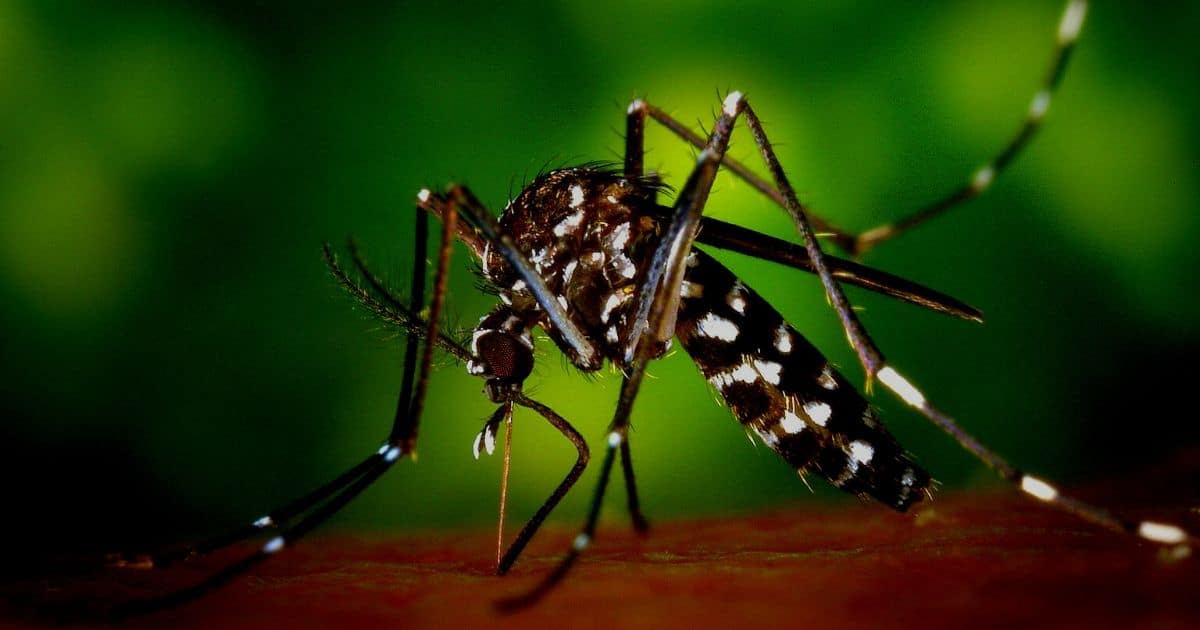
Topics include:
- The reasons behind the rise of dengue cases
- Ways to control the mosquito population
- The new norm (disinfection) that everyone is adapting now due to the pandemic
- Different types of disinfection methods
- The most critical areas to focus on during disinfection
- Things to consider when taking up a disinfection service
Q & A Session
Why is fogging still being carried out while misting treatment has a more prolonged residual activity?
Although misting is effective in areas around landscapes and plants, thermal fogging is still an effective method to kill mosquitoes present during the treatment. Thermal fogging is also used to comb a space to get rid of mosquitoes.
Can fogging be done around swimming pools?
The answer is no because the carrier of the insecticide used is usually kerosene or diesel. They cause the surface of the treated area to be oily and slippery. Therefore, carrying out thermal fogging near swimming pools may cause people to slip and fall. On the other hand, misting can be done near swimming pools since the carrier used is water and will not make the floor slippery.
Besides fogging and misting, mosquito treatment around swimming pools can be done by carrying out “Search & Destroy.” This method involves looking out for mosquito breeding sites and destroying them. Proper housekeeping around the swimming pool is also essential to eliminate harborage sites of mosquitoes.
How safe are the mosquito treatment methods?
The insecticides that we use are specifically formulated to affect designated pests. They are target-specific and will not affect other organisms like humans and animals. Proper personal protective equipment (PPE) needs to be used by Pest Management Professionals to prevent overexposure to chemicals. The small amount of chemicals that we breathe in during fogging treatment is not harmful to the general public.
What about the safety of sand granules used in mosquito control?
The sand granules are slow-releasing insecticides that can prevent mosquito breeding in locations with ponding water. They can also be placed at locations that may collect water to prevent mosquito breeding. Compared to larviciding using residual chemicals, sand granules’ action may be slower, but it can provide a longer-lasting effect.
What can be done to prevent mosquito breeding at public bin stations and bin centres?
Proper cleaning practices at these locations are important to prevent mosquito breeding. Gutters must be flushed daily to prevent the collection of water. Any uneven surfaces should be fixed so that water cannot build up. Another piece of advice from our operations director was to drill holes at the bottom of the rubbish bins so that water can escape from the bins to prevent water collection.
What are the effects of disinfectants on humans?
Inhaling small amounts of disinfectants will not have a significant effect on human health. However, we recommend avoiding overexposure to the disinfectants as much as possible. Thus, we need to ensure all safety precautions are in place and ensure no one is on-site during treatment. A treated area needs to be ventilated for one hour after disinfection is carried to allow the disinfectant particles to escape.
Is it true that certain disinfectants can last up to months or even years?
It may be true that a disinfectant can stay effective for a promised timespan. However, other factors may cause it to lose its effectiveness. For example, when people frequently touch a surface, the disinfectant on it may be wiped off. Besides, other pollutants such as dust and dirt may also contaminate the surface.
Want to find out more about mosquito control in Singapore?

Cockroaches and Termites
In the second webinar, we discussed cockroaches and termites. These two insects are commonly encountered in our lives.
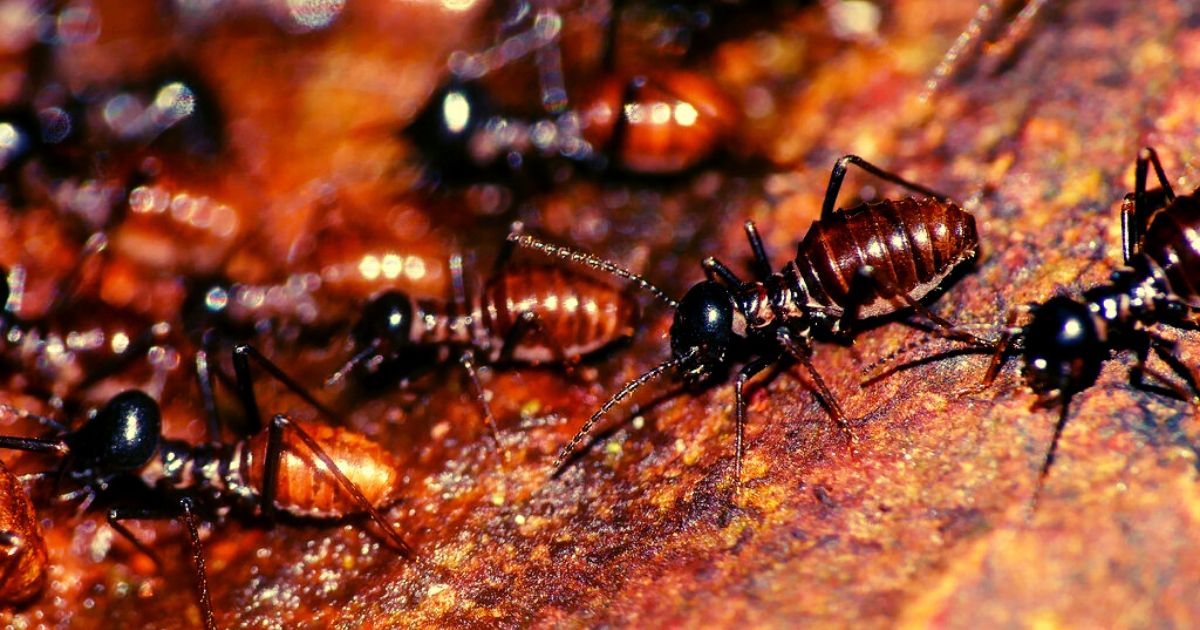
Topics include:
- Biology
- Prevention tips
- Technologies and treatments for the pests
Q & A Session
What is the hatching time of cockroaches’ ootheca?
The time needed for the ootheca to hatch differs between species. However, the typical household species take approximately 20 to 30 days to hatch into young cockroaches.
What is a suitable cockroach treatment method for a pneumatic waste collection system in high-rise buildings?
One of the latest treatment methods for cockroaches is using a product called Mirakn. Mirakn is applied using a dry spraying treatment. It consists of only the active ingredient and carbon dioxide as its carrier, making it an environmentally friendly insecticide that is stainless, odourless and non-combustible.
The carrier gas allows the insecticide to have excellent penetration. In addition, it can reach narrow gaps that are inaccessible via other treatment methods. Mirakn is safe for humans and pets, but the treated area should be left vacant to minimise exposure to chemicals.
Pro Tip: Methods used by professional pest control companies offer long-lasting protection against cockroaches.
All our Pest Management Professionals have undergone specialised training before they could become certified applicators of Mirakn. The frequency of Mirakn treatments at bin chutes can be affected by several factors. Depending on the infestation level and sanitation level, premises may need more frequent treatments to keep the cockroach population under control.
How to differentiate between subterranean termite and drywood termite infestations?
The signs given off by the infestations of these two groups of termites are different.
For subterranean termite infestations, the most distinguishable sign is the presence of mud tubes or soil-like materials in the infested area. The mud tubes are passageways constructed by subterranean termites to travel from one point to another. The most common sign of infestations by drywood termites is the presence of faecal pellets that resemble sawdust around the infested items or structures. The exit holes where the faecal pellets are pushed out of the infested wood can also be seen on the surface.
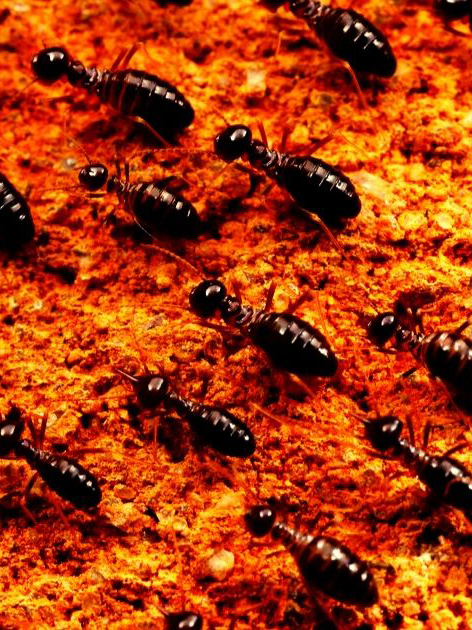
What are the effects of termiticides on plants and the surroundings?
The termiticides that Killem uses are Green Label certified. This guarantees that they are environmentally friendly. Besides, we strictly follow the termiticide’s recommended dosage to prevent harm and pollution to the environment.
What are the potential risks of the baiting treatment program for pets?
The active ingredient of the baits used for subterranean termite treatments targets the moulting process of termites. Animals with endoskeletons, such as dogs and cats, do not undergo a moulting process. Thus, pets are not affected by the baits.
How many bait stations need to be deployed in a heavily infested unit?
Subterranean termites live underground. Mud tubes are used for foraging. Therefore, although many mud tubes are found in a unit, they may belong to the same colony. Just one bait station is needed to control the termites in this unit. The termites will feed on the bait and bring the bait back to the nest. In turn, the bait is shared among the colony members.
Rodents: The Year of the Rat
In the third and last webinar, we focused on rodents. In this webinar titled “Rodents: The Year of The Rat’, we were honoured to have Dr How Yee Fatt as one of the speakers. Dr How is one of the leading entomologists in Singapore who is also the Business Support Manager (Technical R&D) of Bentz Jaz Singapore.

During the webinar, we discussed the biology and signs of rodent infestations. The speakers also shared several innovative prevention and management solutions. Killem Pest offers a special rodent monitoring and control system known as IPM square.
Q & A Session
What are the advantages of choosing IPM Square systems over other rodent monitoring systems?
There are many rodent monitoring systems in the market. The IPM Square Rat differs from the others as it incorporates snap traps with the use of sensors. While the system is detecting rodent activities, it simultaneously traps rodents and protects your house from infestations.
The IPM Square Rat is the camera used in rodent monitoring. It is highly intelligent and is able to recognise rodents using technology similar to facial recognition for humans. This technology enables accurate monitoring of rodent activities.
How do the monitoring systems work when there is a breakdown in the power supply or Wi-Fi networks?
The monitoring sensors and cameras are battery operated. Thus, they can function without a power supply. The outage of the Wi-Fi system may disrupt the monitoring systems since the data is continually being uploaded to the cloud servers.
However, the monitoring cameras have memory cards in them. Thus, they are still able to record the footage and store them in the local device storage. Users can also still review the footage by retrieving the local memory card and going back to a timeframe in the past.
How often should the rodent flush-out program be carried out?
The rodent flush-out program is an intensive program to manage rodent infestations. Depending on the infestation level, we have clients that require rodent flush-out programs with frequencies ranging from twice a year to monthly. Premises with heavy rodent infestations require more frequent rodent flush-out program applications. Routine maintenance can also help keep rodent populations under control.
Are glue boards safe for use in childcare centres?
Proper treatment methods are the key to ensuring treatment is safe. Glue boards should be strategically placed. Examples include the false ceiling or inside tamper-resistant bait stations (only accessible to Pest Management Professionals). The glue board method is applied to:
- Ensure the effectiveness of the control program
- Minimise the impact on the residents
Besides cages, are there any other rodent prevention methods for the garden or other outdoor spaces?
The tamper-resistant rodent bait station is a useful tool for rodent control. Rodenticides or traps are placed inside the station. Then, the station is placed in the garden. The bait stations prevent other animals, such as cats and dogs, from consuming the bait or activating the traps. Fallen leaves can serve as a home for rodents. Thus, keeping your garden and outdoor area clean and tidy is also important.
What is the rodent sealant?
During the webinar, we introduced a rodent sealant. This sealant can remain on the treated surface as long as there is no external disturbance. However, the sealant should be replenished or reapplied if it is disturbed by rodents or even humans. The sealant has a mild smell that repels rodents and is not detectable by humans during daily activities. The sealant has a shelf life of approximately five years. To maximise its shelf, proper closure and storage is recommended.
Is it possible to have more than one rodent species infesting a house?
Yes, it is possible. However, the rodents will nest at different locations. Roof rats and Norwegian rats are commonly found in Singapore. Roof rats (as their name implies) spend their time at higher elevations such as attics and false ceilings. Norwegian rats form burrows on the ground, or they nest in the sewers. The two species will not have the same nesting site as they are territorial.
What is the difference between shrews and rodents?
Shrews are animals that resemble rodents. Unlike rodents, shrews will not chew on wires or other items as they have different body structures. Shrews feed mainly on insects and other small animals such as birds, snakes and even rodents. Shrews are less likely to carry diseases because their behaviours are different from rodents. Rodents feed on a wide range of food, including rubbish and waste. They are commonly found in areas with poor sanitation such as the sewer and waste collection sites, which increases their chances of contracting various pathogens.

Pest Problem? Let Us Help.
We offer fast and effective precision treatments to eliminate pests while ensuring a safe environment for your home or business.
Related Posts
The Major Threat of Dengue in Singapore
Outbreaks of Dengue in Singapore are very common. 2019 saw several significant Dengue cluster formations. The charts for 2020 predict a continuation of the threat of Dengue in Singapore. The coronavirus outbreak has sparked concern that construction sites may become Dengue hotspots.

Chart of Dengue cases in Singapore (as of May 15th, 2020). Source: NEA
Risk of Dengue in Singapore
Dengue is a tropical disease that is caused and transmitted through mosquitoes. Singapore’s hot and humid climate makes it a paradise for mosquito breeding.
The threat of Dengue in Singapore is all year round.
In recent years, the two most significant Dengue outbreaks occurred at the beginning of the year (2016) and around halfway through the year (2019). See chart above.
Common Symptoms of Dengue Fever
If you are infected with Dengue fever, you may only show few or no signs of the disease. This is called asymptomatic.
Some people may experience symptoms a few days after they’ve been bitten by a mosquito carrying the virus.
Common symptoms
- Recurring fever
- Pain behind the eyes
- Muscle pain
- Joint pain
- Bone pain
- Severe headache
- Skin rash with red spots
Dengue Hemorrhagic Fever (DHF)
While the fever usually isn’t fatal, in some cases it progresses to something called Dengue Hemorrhagic Fever (DHF). Life-threatening complications may then occur.
Symptoms of DHF include:
- Severe abdominal pain
- Diarrhea
- Vomiting
- Convulsions
- Bruising
- Uncontrolled bleeding
Finally, DHF can also lead to a high fever (lasting between 2 to 7 days) and Dengue Shock Syndrome.

Transmission of Dengue
Dengue is transmitted via Aedes mosquitoes. The most common mode of transmission starts when an Aedes mosquito bites a person infected with the Dengue virus.
The virus then undergoes an extrinsic incubation period in the mosquito for 8-12 days before granting the mosquito the ability to transmit the virus for the rest of its life. The infectious mosquito then transmits the virus to humans via its bite. The intrinsic incubation period in humans can take up to 10 days and the infected human will begin to show symptoms of the disease.
Control of Dengue in Singapore
The control of Dengue focuses on reducing the number of mosquito vectors. The control methods can be categorized into 4 main groups, namely cultural control, physical control, chemical control and biological control.
The National Environment Agency has been promoting the Mozzie Wipeout campaign that encourages the public to eliminate all potential mosquito breeding sites and make the environment less suitable for the mosquitoes’ survival. The Mozzie Wipeout campaign is an example of cultural control.
An example of physical control is the placement of gravitas (and their predecessor ovitraps) to trap gravid mosquitoes.
Chemical control is the most common among the control methods. They rely on the use of chemical insecticides and is usually done via larviciding, thermal fogging and misting methods.
Biological control is another environmentally friendly approach to controlling mosquito populations. It involves the use of biological agents such as bacteria to control the mosquito population. Another innovation is Project Wolbachia which reduces the population of Aedes mosquitoes through the release of sterile male Aedes mosquitoes.
Pro tip: The control of Dengue focuses on reducing the number of mosquito vectors, and pest control companies play a crucial role in this battle.
Tips to Reduce the Risk of Mosquito Bites
Let’s take a moment to look at some ways to reduce the risk of getting bitten by mosquitoes.
7 Tips:
- Use insect repellents
- Wear protective clothing
- Avoid peak mosquito hours
- Keep air circulating
- Sleep under a mosquito net
- Get rid of stagnant water
- Keep your gardens and home clean
Want to find out more about mosquito control and extermination in Singapore?

Controlling and preventing mosquitoes in Singapore is a real challenge. As mentioned, the climate offers an ideal breeding ground for mosquitoes. However, public awareness, preventive methods, and collective efforts are crucial in the battle against Dengue in Singapore.
Pest control companies such as Killem Pest play a crucial role in this battle. The team of Pest Management Professionals (PMPs) is experienced, knowledgeable, and equipped with the right tools. Together we can win this battle!
How to Prevent Dengue Fever
- Apply mosquito repellent
- Airconditioning
- Wear long clothing when you are outdoor
Frequently Asked Questions
Dengue mosquito bites are usually much redder and itchier compared to normal mosquito bites.
Dengue can’t be cured, you can only relieve the symptoms until the infection has gone. So preventing dengue mosquito bites is the best strategy.
In some cases, severe dengue can result in internal bleeding, organ damage or even death.
The dengue mosquitos are significantly smaller, dark in color, and have white stripes on their legs.
Related Posts
COVID-19 Versus Dengue: What Do We Need to Know?
COVID-19 is spreading rapidly worldwide. It was recognized as a pandemic by the World Health Organization (WHO) on March 12th. In Singapore, there are 1309 confirmed cases as of April 5th, 2020.
With the outbreak of coronavirus worldwide, another public health concern faces neglect by the public: the Dengue virus (DENV). This life-threatening mosquito-borne disease is highly active in Singapore for years. People may not realize that the rise of dengue fever cases is looming in Singapore. There are 4776 dengue cases recorded as of March 28th, 2020. Twice the number compared to the same period of 2019.
Death cases: COVID-19 versus Dengue
How deadly is COVID-19, and how can Dengue be lethal to us? In Singapore, the total of deaths from COVID-19 rose to 6 death cases on April 4th. However, the Dengue virus took a total of 20 lives in 2019. So far, there are no cases of deaths due to the Dengue virus in 2020.
You may wonder if we can differentiate between the symptoms of COVID-19 and Dengue fever without laboratory testing. Here are some ways to tell the difference:
- People who are infected with Dengue virus share similar symptoms as those with COVID-19, such as high fever and headache.
- However, they may also develop other symptoms such as joint and muscle pain, nausea, vomiting, rashes of the skin, and mild bleeding from nose and gum.
- Respiratory symptoms such as cough, sore throat, and breathing difficulties are not common in the Dengue virus.
- The spread of COVID-19 is mainly person-to-person.
- COVID-19 can be passed over to a healthy person by nasal discharge and saliva droplets from coughs and sneezes of a person infected with COVID-19.
- The virus can easily infect a healthy person if the person uses his or her contaminated hand to rub or touch the eyes, nose, or mouth.
- Not surprisingly, the infection of COVID-19 can happen through the inhalation of infected droplets into the lungs.
- In the case of the Dengue virus, the transmission of the disease is vastly different compared to COVID-19. It is a vector-borne disease that requires the help of Aedes mosquitoes to spread the virus.
The Prevention of Dengue
Dengue virus cannot be transmitted directly from one human to another.
Instead, it transmits through an insect vector – mosquitoes. By pulling mosquitoes out of the transmission or infection chain, we can stop the transmission of the virus. In other words, avoiding mosquito bites is an essential aspect in the prevention of Dengue.
Want to find out more about mosquito control and extermination in Singapore?

Eliminate Mosquito Breeding in and Around Your House
Controlling the mosquito population is essential in the fight against Dengue. Aedes mosquitoes breed in clean water found in natural and human-made containers. They can breed in water bodies that are as small as the size of a 20 cents coin, so all stagnant water must be eliminated to prevent mosquito breeding. Practice the following 5-step Mozzie Wipeout recommended by the National Environment Agency:
- Turn any unused pails
- Change water in vase regularly
- Flip flower pot plates
- Loosen hardened soil in flowerpots or planter boxes
- Clear roof gutter and place biological control (Bti)
Prevent Mosquito Bites
We can minimize our risk of getting mosquito bites by taking extra precautions when visiting places that are prone to mosquito attacks.
Long sleeve tops and long pants offer basic protection against mosquito bites. There are a variety of mosquito repellents that are made of either chemical compounds or natural plant extracts. You may choose any mosquito repellent of your preference, or that is available to you. However, it is essential to follow the instructions and reapply the repellent regularly as they may be rubbed or washed off during activities.
COVID-19
WHO and CDC recommend some steps to protect you and the others from the virus. At the top of the list, we need to maintain good hygiene practices. Wash your hands frequently with soap and water for at least 20 seconds to properly remove germs from your hands. Hand sanitizers with at least 60% alcohol content can be used if soap and water are not available. It is also important to avoid touching your face or eyes with unwashed hands.
Pro Tip: The best way to prevent COVID-19 is to avoid exposure to the virus and get vaccinated.
Social Distancing
Social distancing plays an integral part in the prevention of COVID-19 as you may pick up someone else’s respiratory droplets if you are standing too close to each other. A distance of at least 1 meter between individuals is recommended to prevent the transmission of the coronavirus. Social distancing is even more important in communities where COVID-19 is spreading. Avoid close contact with people who are sick to protect both the person and yourself.
Be socially responsible. Seek medical attention if you are sick or experiencing respiratory symptoms. Follow the doctor’s advice and stay at home to prevent the disease from spreading. Cover your mouth and nose with a tissue when coughing or sneezing to prevent the spread of respiratory droplets. Lastly, wear a facemask to prevent the spread of respiratory droplets to other people.
Cleaning and disinfection should be carried out on frequently contacted surfaces.
The NEA provided a list of household products that can be used for disinfection. Several sources reported that the virus was able to last on various surfaces for up to days. Thus, disinfection should be done regularly.
Related: What Role Can The Pest Control Industry Play in Fighting Off Coronavirus in Singapore?

Concerned About COVID-19? Let Us Help.
We provide fast and effective disinfection solutions to eliminate harmful germs and viruses, ensuring a safe and hygienic environment for your home or business.
How to Prevent Dengue?
Dengue can be prevented by taking basic precautions. The number 1 tip is to wear long pants and long-sleeve shirts. Reduce your skin exposure as much as possible! Next, a mosquito net helps protect you at night while asleep. Keeping your living and office spaces clean also helps prevent mosquitoes and dengue.
Frequently Asked Questions
Both Covid-19 and dengue can have similar symptoms, such as fever, body aches, myalgia, chills, fever, and nausea. While COVID fever is said to be low or moderate, dengue fever can rise considerably high.
Both infections can cause complications and can be life-threatening. Repeat infection with dengue is more dangerous than the first one.
Yes, you can catch COVID and dengue at the same time. COVID-19 and dengue co-infection can cause severe disease and fatal outcomes.
Related Posts
What Role Can The Pest Control Industry Play in Fighting Off Coronavirus in Singapore?
Dengue
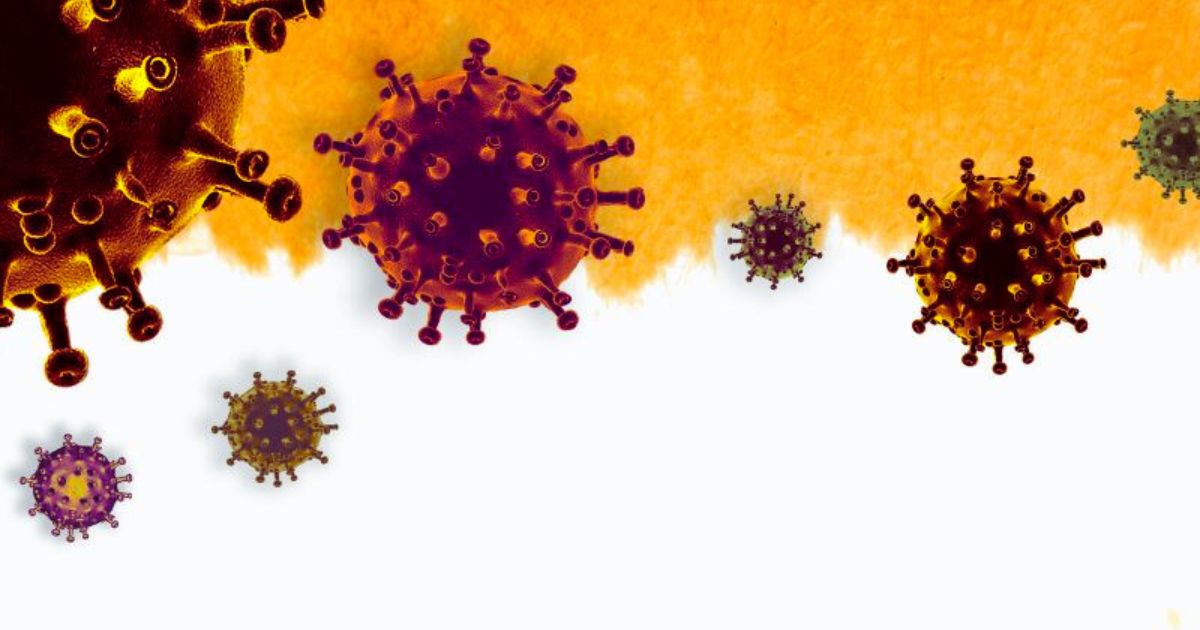
Table Of Contents
- How active is the Coronavirus in Singapore?
- What are the Symptoms of Coronavirus (COVID-19)?
- How can the symptoms of the Coronavirus be confused with dengue? Are the symptoms of dengue and the Coronavirus similar?
- What Animals Carry Coronaviruses?
- Can Pests Carry the Coronavirus?
- Can Pest Control Prevent the Coronavirus?
- What Does Killem Pest do to Protect Ourselves and Our Clients from Coronavirus in Singapore?
The year 2020 started with the uncertainties caused by the 2019 novel coronavirus disease (COVID-19). Coronaviruses are a large family of viruses, which include those that cause the Middle East Respiratory Syndrome (MERS-CoV) and Severe Acute Respiratory Syndrome (SARS-CoV).
SARS-CoV is a well-known coronavirus in Singapore as its outbreak in 2003 killed 33 people while leaving various social and economic impacts.
Although COVID-19 is more contagious compared to SARS and MERS, it is less fatal than the two, meaning that it is less likely to kill.
How active is the Coronavirus in Singapore?
There are 85 confirmed cases of Coronavirus in Singapore as of 21 Feb 2020. Moreover, there are currently 5 clusters in Singapore, with the Grace Assembly of God Church being the largest cluster. Most of the cases are linked to one another, but the emergence of cases without any known links to other cases caused Singapore to raise the DORSCON level to orange.
What are the Symptoms of Coronavirus (COVID-19)?
The initial stage or main symptoms of COVID-19 are fever, cough, and shortness of breath.
It is hard to differentiate between COVID-19 and common cold without other indicators such as the recent travel record to mainland China or close contact with other confirmed cases.
In most cases, the symptoms will appear within 5 to 6 days. However, the duration of the period between infection and the onset of symptoms can be as long as 14 days.
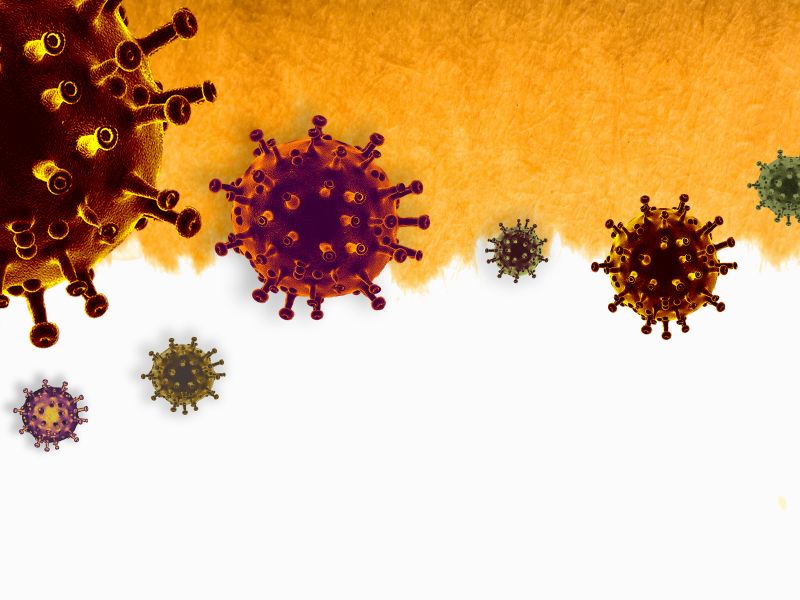
How can the symptoms of the Coronavirus be confused with dengue? Are the symptoms of dengue and the Coronavirus similar?
The patient infected with the dengue virus shares similar symptoms as those with COVID-19, such as high fever and headache. However, the one who has the dengue virus may develop other symptoms such as joint and muscle pain, nausea, vomiting, rashes of the skin, and mild bleeding from the nose and gum. Respiratory symptoms such as cough, sore throat, and breathing difficulties are not common in the case of the dengue virus.
In Singapore, a 57-year-old lady who was first admitted as a dengue patient turned out to test positive for COVID-19 on 18 Feb 2020.
After several laboratory testing, MOH (Ministry of Health) had confirmed that this lady is the only known person in Singapore who is infected with both dengue and COVID-19.
Now, there is a deep concern about the laboratory tests of COVID-19, which show negative results initially but ended up diagnosed as COVID-19 in the final examination. It may take more than one test to confirm a COVID-19 case as the viral material collected in the initial test sample may be too little for the test to detect the virus.
Want to learn about disinfection services to protect against COVID-19?

What Animals Carry Coronaviruses?
There are many coronaviruses known to circulate among animals and birds in the world. Nonetheless, only seven of them are capable of causing disease in humans. Some animals that are closely related to coronaviruses include bats, camels, and cats. The animal source of the COVID-19 virus has not yet been identified.
An animal from the live animal market in China may have caused the first reported human infections. Let’s look at the case of SARS coronavirus. The common perception is that it originated from bats that transmitted it to humans directly. Instead, it jumped to infect humans via civet cats. Furthermore, MERS coronavirus was also believed to have originated from bats but jumped to infect humans via camels.
Can Pests Carry the Coronavirus?
In view of WHO (World Health Organization), there is no evidence at present to show COVID-19 can infect pests or spread through pests. Currently, it spreads only by infected people.
Can Pest Control Prevent the Coronavirus?
While pests may not spread COVID-19, controlling the population of pests around you reduces the number of disease-carrying pests such as mosquitoes and rodents.
Some of the pest control companies provide disinfection service that can effectively kill various germs, including coronaviruses.
Pest management professionals are equipped with the necessary chemicals and equipment to eliminate harmful pathogens.
Pro Tip: Pest infestation in your home is bad anyway, but the ongoing COVID-19 pandemic can make them even more dangerous than usual.
What Does Killem Pest do to Protect Ourselves and Our Clients from Coronavirus in Singapore?
In light of recent events with regards to COVID-19, Killem has been adhering to measures put in place by the Ministry of Health and the World Health Organisation. All our staff are
- To have their body temperatures checked and recorded twice a day
- Required to wear masks when entering client sites
- Must see a doctor and stay away from work for at least 5 days if they are unwell
Our Pest Management Professionals (PMPs) receive a thermometer per vehicle to ensure this, and they use hand sanitiser before and after each job.
It is our responsibility and duty to protect our family and friends from the Coronavirus in Singapore.
Avoid COVID-19 by taking necessary actions.
A good practice of respiratory hygiene is the staple step in preventing the spread of it. Notably, disinfection is vital to ensure our living and working environments are free of germs and viruses.

Concerned About COVID-19? Let Us Help.
We provide fast and effective disinfection solutions to eliminate harmful germs and viruses, ensuring a safe and hygienic environment for your home or business.
For the last 27 years, Killem has been at the forefront of protecting Singapore from vector-borne diseases such as Zika and Dengue. Right now, we are doing our part to curb the spread of the contagious Coronavirus Disease (COVID-19), so please contact us if you need our assistance in the fight against the disease. We offer a Home Disinfection Service and a Disinfectant Spray.
Frequently Asked Questions
Pests can cause damage to property and be a health hazard as they spread diseases. That’s why it is important to protect homes and workplaces from pest invasion.
Spending significant time at home due to COVID-19 can attract unwanted bugs, rodents, and other invasive pests. Leaving unfinished food or garbage inside or outside your home creates pest-friendly conditions.
Pests don’t pause during the pandemic, so keep an eye out for cockroaches, rodents, flies, and other bugs on your property.
7 Tips to Reduce Your Risk of Mosquito Bites
Revelling in outdoor activities like jogging, hiking, and barbeques during a long-awaited weekend or school holiday in perfect weather are our desired plans. However, nothing spoils these plans like the whine of a mosquito searching for a fresh blood meal. The itchy mosquito bites and whiny hum of their buzzing wings can ruin not only our daily activities but also affect our quality of sleep.
Beyond the nuisance factors, mosquitoes are vectors of some deadly diseases including Dengue fever, Chikungunya, Zika, and Malaria.
These mosquito-borne diseases are transmitted by infected mosquitoes to healthy and uninfected people. Unfortunately, there are still no vaccines or drugs to treat or prevent dengue fever, other than avoiding ourselves from getting mosquito bites.
Learning how to reduce your risk of mosquito bites will lower the chances that you encounter these unwanted guests in your surroundings.
Here are 7 tips to reduce your risk of mosquito bites:
1. Use Insect Repellents
Apply insect repellent to uncovered skin when going outdoors. Repellents containing DEET (a common active ingredient in insect repellents) are the most widely available insect repellents in the world. A great deal of testing has been done on DEET insect repellents and they are proven to be safe to use.
2. Wear Protective Clothing
Vision is one thing mosquitoes use for searching for their blood meal. Black or dark coloured clothes are proven to be more attractive than light coloured clothes for mosquitoes. But can mosquitoes bite through clothes? It is known that mosquitoes can bite through certain fabrics and clothing that is made of thin materials like tights. Hence, long-sleeved thick clothing is advisable as mosquitoes might find it difficult to bite through.
It’s essential to keep in mind that while thick clothing provides better protection, it’s not foolproof. Mosquitoes can still find ways to access your skin if the clothing is skintight or if there are gaps. So, to avoid mosquito bites it’s important to consider not only the colour and fabric thickness, but ensure the proper clothing fit. Additionally, using insect repellent on exposed skin areas and clothing as well can be a helpful to prevent mosquito bites.
3. Avoid Peak Mosquito Hours
To avoid mosquito bites, you might need to plan any outdoor activities when mosquitoes are less active. Although different species have different active hours, mosquitoes are generally more active during dawn and dusk.
Want to find out more about mosquito control in Singapore?

4. Keep Air Circulating
Mosquitoes are weak fliers, which mean they are not that efficient at flying and are not able to overcome strong wind.
Use of electric fan for outdoor activities and gatherings can prevent you and your family from mosquito bites.
Mosquitoes usually fly at the lower half of our bodies and near to the ground. Therefore, aim fans to that area.
5. Sleep Under a Mosquito Net
If you notice mosquito bites on your body after hours of sleeping, using a mosquito net would be a good call for you.
6. Get Rid of Stagnant Water
Any puddles of water around your home can become a potential breeding source for mosquitoes. Always be mindful to empty water from flower pots, plates, pet food, WC pan collar, buckets, barrels and cans at least once or twice a week as mosquitoes’ life cycle can be completed within a week. Always cap the bamboo pole holders when not in use to prevent rainwater from being splashed into the holders.
Pro Tip: The best way to get rid of mosquitoes is to eliminate areas where they can lay eggs
7. Keep Your Landscapes and Home Clean
Remember to keep the gully traps, scupper drains, and roof gutters clean. Thinning dense vegetation will help to improve air circulation. You can avoid getting mosquito bites by making your environment less desirable or appealing to them.
The recommended measures discussed above may help to protect you from mosquito bites. However, mosquito bites are inevitable during some uncontrollable situations and in specific environments. To read more, click here.
Adoption of permanent measures is strongly advised to address and eliminate the root cause of mosquito breeding. To find out the available permanent measures, you may seek help from our expert team.

Pest Problem? Let Us Help.
We offer fast and effective precision treatments to eliminate pests while ensuring a safe environment for your home or business.
Frequently Asked Questions
Usually, mosquito bites only cause itching, however, if you get bitten by a mosquito carrying viruses or germs, it can make you sick.
If you start getting a fever, headache, body aches, or other severe symptoms after the mosquito bite, then you should definitely see a doctor.
Applying water, ice, or a mixture of baking soda and water can help to reduce the itching from mosquito bites.





